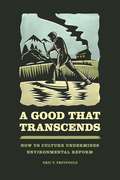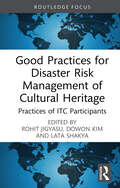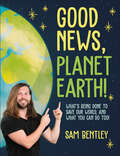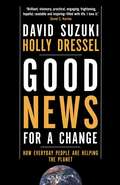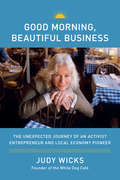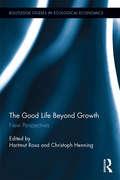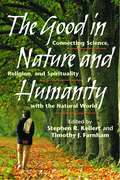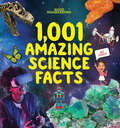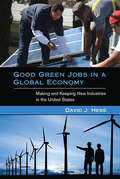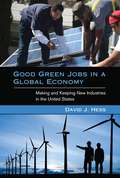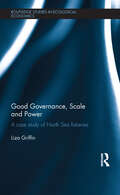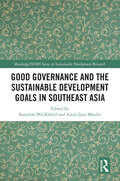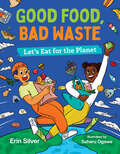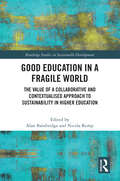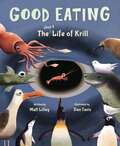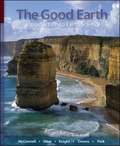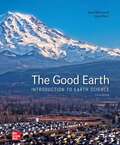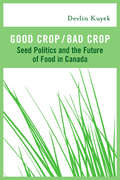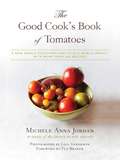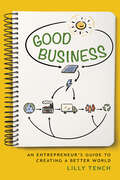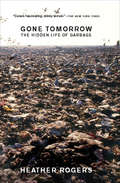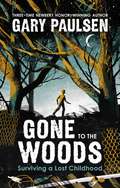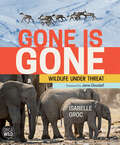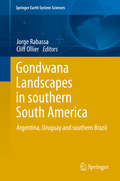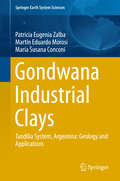- Table View
- List View
A Good That Transcends: How US Culture Undermines Environmental Reform
by Eric T. FreyfogleSince the birth of the modern environmental movement in the 1970s, the United States has witnessed dramatic shifts in social equality, ecological viewpoints, and environmental policy. With these changes has also come an increased popular resistance to environmental reform, but, as Eric T. Freyfogle reveals in this book, that resistance has far deeper roots. Calling upon key environmental voices from the past and present—including Aldo Leopold, Wendell Berry, David Orr, and even Pope Francis in his Encyclical—and exploring core concepts like wilderness and the tragedy of the commons, A Good That Transcends not only unearths the causes of our embedded culture of resistance, but also offers a path forward to true, lasting environmental initiatives. A lawyer by training, with expertise in property rights, Freyfogle uses his legal knowledge to demonstrate that bad land use practices are rooted in the way in which we see the natural world, value it, and understand our place within it. While social and economic factors are important components of our current predicament, it is our culture, he shows, that is driving the reform crisis—and in the face of accelerating environmental change, a change in culture is vital. Drawing upon a diverse array of disciplines from history and philosophy to the life sciences, economics, and literature, Freyfogle seeks better ways for humans to live in nature, helping us to rethink our relationship with the land and craft a new conservation ethic. By confronting our ongoing resistance to reform as well as pointing the way toward a common good, A Good That Transcends enables us to see how we might rise above institutional and cultural challenges, look at environmental problems, appreciate their severity, and both support and participate in reform.
Good Practices for Disaster Risk Management of Cultural Heritage: Practices of ITC Participants (Routledge Studies in Hazards, Disaster Risk and Climate Change)
by Rohit Jigyasu Dowon Kim Lata ShakyaThis book is a selection of case studies undertaken by cultural heritage and disaster risk management professionals across the world demonstrating good practices for disaster risk management of cultural heritage. The readers will learn about the practical application of various methodologies, tools, and techniques for disaster risk assessment, mitigation, preparedness, response, and recovery of cultural heritage. They will also learn about the application of traditional knowledge and engagement of communities for disaster risk management of cultural heritage. This will help relevant organisations and professionals to develop and implement projects in this field. The intended audience for this book are Practitioners or site managers of cultural heritage sites and museums. Also, researchers and students studying disaster risk management of cultural heritage. The book will also be of interest to disaster risk management institutions at the urban, regional or national level/cultural heritage management institutions at the urban, regional or national level/city administration, municipalities, urban local bodies and planning departments/educational and research institutions which have specialised programmes in engineering, planning, disaster risk management, and conservation of cultural heritage.
Good News, Planet Earth: What’s Being Done to Save Our World, and What You Can Do Too!
by Sam BentleyJoin sustainability enthusiast and climate activist Sam Bentley as he shares the hopeful developments combating climate change!Do you feel like climate change is just getting worse and there's nothing you can do to stop it? Good news—there are tons of efforts already underway to save our planet, and we'd love for you to join the fight.Good News, Planet Earth! is your go-to guide to learn all about the amazing sustainable developments that are happening worldwide to combat global warming, pollution, deforestation, the use of wasteful products, and threats to our diverse wildlife.Inside you'll find:· 25 chapters covering ocean-cleanup innovations, composting initiatives, animal rights activism, efforts to greenify public spaces, solar power advancements, public transportation solutions, and more!· 100 actionable steps you can take to fight climate change and live more sustainably!An uplifting and informative call to action for any environmentally conscious individual, Good News, Planet Earth! is the small but mighty book that might just help save the world!
Good News for a Change
by David Suzuki Holly DresselWe all know the bad news. Every day, along with all the bulletins on social upheavals and terrorist attacks, we read reports of another animal species on the brink of extinction, of how our ocean fisheries are collapsing, and of the damage industrial development is wreaking on our soil, air and water. We drive bigger cars, eat pesticide-sprayed, genetically altered foods and consume so much energy that even rich, industrialized countries suffer power outages. We seem intent on continuing to live this way, even though many scientific experts tell us our actions are suicidal.The good news, Suzuki and Dressel tells us, is that thousands of individuals, groups and businesses are already changing their ways. A growing number of companies are still making money while benefiting their local communities. Anti-globalization activists and Third World villagers are learning how to practice real participatory democracy and create real community. Farmers and ranchers are sharing their land with other species, including predators and pests, while still prospering. Even some governments, local and national, are starting to base economic development strategies on our collective dependency on nature, while decreasing large-scale interference in our ecosystems.
Good Morning, Beautiful Business
by Judy WicksIt's not often that someone stumbles into entrepreneurship and ends up reviving a community and starting a national economic-reform movement. But that's what happened when, in 1983, Judy Wicks founded the White Dog Café on the first floor of her house on a row of Victorian brownstones in West Philadelphia. After helping to save her block from demolition, Judy grew what began as a tiny muffin shop into a 200-seat restaurant-one of the first to feature local, organic, and humane food. The restaurant blossomed into a regional hub for community, and a national powerhouse for modeling socially responsible business. Good Morning, Beautiful Businessis a memoir about the evolution of an entrepreneur who would not only change her neighborhood, but would also change her world-helping communities far and wide create local living economies that value people and place as much as commerce and that make communities not just interesting and diverse and prosperous, but also resilient. Wicks recounts a girlhood coming of age in the sixties, a stint working in an Alaska Eskimo village in the seventies, her experience cofounding the first Free People store, her accidental entry into the world of restauranteering, the emergence of the celebrated White Dog Café, and her eventual role as an international leader and speaker in the local-living-economies movement. Her memoir traces the roots of her career - exploring what it takes to marry social change and commerce, and do business differently. Passionate, fun, and inspirational,Good Morning, Beautiful Businessexplores the way women, and men, can follow both mind and heart, do what's right, and do well by doing good.
The Good Life Beyond Growth: New Perspectives (Routledge Studies in Ecological Economics)
by Hartmut Rosa Christoph HenningMany countries have experienced a decline of economic growth for decades, an effect that was only aggravated by the recent global financial crisis. What if in the 21st century this is no longer an exception, but the general rule? Does an economy without growth necessarily bring hardship and crises, as is often assumed? Or could it be a chance for a better life? Authors have long argued that money added to an income that already secures basic needs no longer enhances well-being. Also, ecological constraints and a sinking global absorption capacity increasingly reduce the margin of profitability on investments. Efforts to restore growth politically, however, often lead to reduced levels of social protection, reduced ecological and health standards, unfair tax burdens and rising inequalities. Thus it is time to dissolve the link between economic growth and the good life. This book argues that a good life beyond growth is not only possible, but highly desirable. It conceptualizes "the good life" as a fulfilled life that is embedded in social relations and at peace with nature, independent of a mounting availability of resources. In bringing together experts from different fields, this book opens an interdisciplinary discussion that has often been restricted to separate disciplines. Philosophers, sociologists, economists and activists come together to discuss the political and social conditions of a good life in societies which no longer rely on economic growth and no longer call for an ever expanding circle of extraction, consumption, pollution, waste, conflict, and psychological burnout. Read together, these essays will have a major impact on the debates about economic growth, economic and ecological justice, and the good life in times of crisis.
The Good in Nature and Humanity: Connecting Science, Religion, and Spirituality with the Natural World
by Stephen R. Kellert Timothy FarnhamScientists, theologians, and the spiritually inclined, as well as all those concerned with humanity's increasingly widespread environmental impact, are beginning to recognize that our ongoing abuse of the earth diminishes our moral as well as our material condition. Many people are coming to believe that strengthening the bonds among spirituality, science, and the natural world offers an important key to addressing the pervasive environmental problems we face.The Good in Nature and Humanity brings together 20 leading thinkers and writers -- including Ursula Goodenough, Lynn Margulis, Dorion Sagan, Carl Safina, David Petersen, Wendell Berry, Terry Tempest Williams, and Barry Lopez -- to examine the divide between faith and reason, and to seek a means for developing an environmental ethic that will help us confront two of our most imperiling crises: global environmental destruction and an impoverished spirituality. The book explores the ways in which science, spirit, and religion can guide the experience and understanding of our ongoing relationship with the natural world and examines how the integration of science and spirituality can equip us to make wiser choices in using and managing the natural environment. The book also provides compelling stories that offer a narrative understanding of the relations among science, spirit, and nature.Grounded in the premise that neither science nor religion can by itself resolve the prevailing malaise of environmental and moral decline, contributors seek viable approaches to averting environmental catastrophe and, more positively, to achieving a more harmonious relationship with the natural world. By bridging the gap between the rational and the religious through the concern of each for understanding the human relation to creation, The Good in Nature and Humanity offers an important means for pursuing the quest for a more secure and meaningful world.
Good Housekeeping 1,001 Amazing Science Facts
by Good Housekeeping Rachel Rothman Michael BurganDo bees sleep? Can rocks bend? Discover the amazing answers to questions like these in this science fact-packed treasure trove for kids age 8 to 12!Join the experts at the Good Housekeeping Institute and get stoked about science! Discover incredible info about awesome animals, our exceptional planet Earth, exciting chemical reactions, extraordinary engineering, and more in this fun-filled, fact-packed book for budding scientists. Packed with hundreds of dynamite color photos and illustrations, hands-on STEAM activities, quizzes, and tons of cheeky jokes, this boredom-busting gift book provides young readers with a close-up look at the science all around us.Chapters cover super topics that kids love from animals to nature and Earth science to engineering and technology.Inside you&’ll find: Dig deep to explore Earth from the inside out, from what&’s going on deep below our feet, to why geysers erupt, and if we drink the same water as the dinosaurs did.Go inside the human body to learn how your eyes see, what happens to food after you eat it, and about the organ which is like a balloon.Investigate our natural world and find out if there are more trees or stars, how a coral reef grows from a tiny animal, and how freezing ice and fiery volcanoes are related.Travel back in time and check out why scientists study dinosaur poop. Then blast off into space to see how stars are born and innovations that will help people travel to Mars.Look at the animal kingdom, from your fellow primates like chimpanzees to insects with killer instincts (and you&’ll even get to find out which ones have the grossest gassy habits…ewww.) With the expert (and sometimes wacky!) science information kids crave, this ultimate book of answers is the perfect classroom resource or gift for the casual browser and the fact-obsessed budding young scientist.
Good Green Jobs in a Global Economy: Making and Keeping New Industries in the United States (Urban and Industrial Environments)
by David J. HessAn examination of the politics of green jobs that foresees a potential ideological shift away from neoliberalism toward “developmentalism.”Good Green Jobs in a Global Economy is the first book to explore the broad implications of the convergence of industrial and environnmental policy in the United States. Under the banner of “green jobs,” clean energy industries and labor, environmental, and antipoverty organizations have forged “blue-green” alliances and achieved some policy victories, most notably at the state and local levels. In this book, David Hess explores the politics of green energy and green jobs, linking the prospect of a green transition to tectonic shifts in the global economy. He argues that the relative decline in U.S. economic power sets the stage for an ideological shift, away from neoliberalism and toward “developmentalism,” an ideology characterized by a more defensive posture with respect to trade and a more active industrial policy.After describing federal green energy initiatives in the first two years of the Obama administration, Hess turns his attention to the state and local levels, examining demand-side and supply-side support for green industry and local small business. He analyzes the successes and failures of green coalitions and the partisan patterns of support for green energy reform. This new piecemeal green industrial policy, Hess argues, signals a fundamental challenge to anti-interventionist beliefs about the relationship between the government and the economy.
Good Green Jobs in a Global Economy
by David J. HessGood Green Jobs in a Global Economy is the first book to explore the broad implications of the convergence of industrial and environnmental policy in the United States. Under the banner of "green jobs," clean energy industries and labor, environmental, and antipoverty organizations have forged "blue-green" alliances and achieved some policy victories, most notably at the state and local levels. In this book, David Hess explores the politics of green energy and green jobs, linking the prospect of a green transition to tectonic shifts in the global economy. He argues that the relative decline in U. S. economic power sets the stage for an ideological shift, away from neoliberalism and toward "developmentalism," an ideology characterized by a more defensive posture with respect to trade and a more active industrial policy. After describing federal green energy initiatives in the first two years of the Obama administration, Hess turns his attention to the state and local levels, examining demand-side and supply-side support for green industry and local small business. He analyzes the successes and failures of green coalitions and the partisan patterns of support for green energy reform. This new piecemeal green industrial policy, Hess argues, signals a fundamental challenge to anti-interventionist beliefs about the relationship between the government and the economy.
Good Governance, Scale and Power: A Case Study of North Sea Fisheries (Routledge Studies in Ecological Economics #29)
by Liza GriffinIn recent years there have been several alarming predictions about the future of the planet’s fish stocks. As a result, many national governments and supranational institutions, including the European Union, have instituted reforms designed to mitigate the crisis. This book examines the discourse and practice of ‘good governance’ in the context of fisheries management. It starts by examining the ‘crisis’ of fisheries in the North Sea, caused primarily by overfishing and failure of the European Union’s Common Fisheries Policy. It then goes on to analyse reforms to this policy enacted and planned between 2002 and 2013, and the proposition that collapse of fish stocks could occur as a result of deficiencies in new governing arrangements, i.e. failure to apply ‘principles of good governance’. The book argues that impediments to good governance practice in fisheries are not merely the result of implementation deficits, but that they constitute a more systematic failure. Governance theory addresses issues of power, but it does not recognise the many important spatially contingent and relational forms of power that are exercised in actual governing practice. For example, it frequently overlooks spatial practices and strategies, such as ‘scale jumping, ‘rescaling’ and the discursive redrawing of governing boundaries. This book exposes some of these spatial power relationships, showing that the presence of such relationships has implications for accountability and effective policymaking. In sum, this book explores some of the ways in which we might better understand governance practice using theories of scale and relational concepts of power, and in the process it offers a critique and rethinking of governance theory. These reflections are made on the basis of an in-depth case study of the attempted pursuit of ‘good governance’ in the European Union via institutional reforms, focusing particularly on the thorny and fascinating case of North Sea fisheries management.
Good Governance and the Sustainable Development Goals in Southeast Asia (Routledge/ISDRS Series in Sustainable Development Research)
by Rasyikah Md Khalid and Ainul Jaria MaidinThis book discusses management and governance initiatives undertaken by agencies and stakeholders towards achieving the Sustainable Development Goals (SDGS) in the Southeast Asian region, specifically Malaysia, Indonesia, Thailand and Singapore. It highlights the theories, methodologies and action plans involved in implementing the goals in these countries and the importance of developing a positive relationship between the public and government agencies. With contributors coming from a range of disciplines and backgrounds across the Association of Southeast Asian Nations (ASEAN) region, this edited collection provides a holistic quantitative and qualitative approach to achieving the SDGs. In order to realise these development objectives, it argues that a strong understanding of the basic principles of governance across all levels is required, supported by effective citizen participation and conflict resolution. It provides a detailed overview of the importance of governance at the country level, addressing the key elements of an integrated framework to support sustainable transitions. Regional case studies highlight processes and recommendations for improving governance and risk management and elevating citizen awareness and participation. Good Governance and the Sustainable Development Goals in Southeast Asia is a comprehensive and valuable companion for researchers, government agencies, and professionals with an interest in the SDGs in Southeast Asia and beyond.
Good Food, Bad Waste: Let's Eat for the Planet (Orca Think #9)
by Erin SilverA deep dive into why humans waste so much food and the consequences for people and the planet Around the world, a billion tons of food gets thrown away every year, even when hundreds of millions of people suffer from hunger. A lot of what we don't eat ends up rotting in landfills which contributes to global warming. The good news is that many governments, communities and individuals are working hard to tackle this giant problem. You can be part of the solution, starting in your own home—and working together, we can decrease our overall waste and make sure all people have food security. Plus, by reducing food waste, we can also fight climate change! With inspiring profiles of food-waste activists and tasty tidbits on things like best-before dates, Good Food, Bad Waste offers much food for thought. The epub edition of this title is fully accessible.
Good Education in a Fragile World: The Value of a Collaborative and Contextualised Approach to Sustainability in Higher Education (Routledge Studies in Sustainable Development)
by Alan Bainbridge Nicola KempThis edited collection aims to provoke discussion around the most important question for contemporary higher education – what kind of education (in terms of purpose, pedagogy and policy) is needed to restore the health and wellbeing of the planet and ourselves now and for generations to come? The book contains contributions from colleagues at a single UK University, internationally recognised for its approach to sustainability education. Introducing a conceptual framework called the ‘Paradox Model’, the book explores the tensions that underpin the challenge of developing sustainability in higher education in the 21st century. It asks probing questions about the purpose of higher education in the 21st century given growing concerns in relation to planetary safety and justice and calls for a rethinking of educational purpose. It draws upon the theory and practice of education and explores how these can develop an understanding of sustainability pedagogies in practice. Finally, it delivers thought-provoking discussion on what constitutes a ‘good’ higher education that meets the needs of a world in crisis. Drawing on a planetary health lens, the book concludes with a ‘manifesto’ that brings together the key insights from the contributing authors. This will be an engaging volume for academics and educators from a wide range of disciplines in higher educational settings interested in translating sustainability theory into educational practice.
Good Eating: The Short Life Of Krill
by Matt LilleyCalifornia Eureka Silver Honoree award 2022 "To my delight, your average krill is a far stranger story of metamorphosis than anything our butterflies can come up with." - Elizabeth Bird, A Fuse 8 Production A fun exploration of a tiny animal at the base of the ocean food chain Just 2 inches long full-grown, this little guy is the foundation of the Southern Ocean food chain... “Hi. What are you? You appear to be an egg. You are an egg sinking. For many days, you sink. You sink a mile down, and you keep sinking down… down… until…” The unidentified narrator follows one krill among billions as it pursues its brief existence, eating and eating while metamorphosing from one thing into another and trying to avoid being eaten. Questions and advice are hurled at the krill on every page, but the krill never responds—because, after all, krill can’t talk, and this is nonfiction. Krill are the largest animals able to catch and eat phytoplankton, and they in turn are eaten by the largest animals ever to live on earth—blue whales—as well as by seals, penguins, and a host of others. In other words, krill are really good at eating, and they make really good eating. And that makes them the most important animals in the high-latitude oceans. As in The Whale Fall Café, Dan Tavis’s illustrations combine scientific accuracy with Nemo liveliness and humor. Our star krill is so good at gobbling up phytoplankton that he turns green, so we can pick him out from the crowd racing to escape a penguin’s beak or a blue whale’s gaping maw. The book has been reviewed and endorsed by global krill expert Dr. Stephen Nichol, and the manuscript earned an honorable mention in Minnesota’s McKnight Artist Fellowships for Writers. Helpful backmatter is included. The Good Eating manuscript won an honorable mention in Minnesota’s McKnight Artist Fellowships for Writers. Technical review and endorsement from Dr. Stephen Nichol, adjunct professor at the University of Tasmania and author of The Curious Life of Krill.
The Good Earth
by David Mcconnell David Steer Catharine Knight Katharine Owens Lisa ParkThe Good Earth covers the primary topics included in other earth science texts. However, there are a few notable differences in its content compared to other textbooks. The Good Earth begins with an introduction (Chapter 1), then takes up the topic of astronomy (Chapters 2, 3), and moves on to solid earth (Chapters 4, 5, 6, 7, 8), and the processes (Chapters 9, 10, 11, 12), which overlap with the hydrosphere (Chapters 11, 12, 13), before dealing with the atmosphere (Chapters 14, 15, 16), and finishing with a wrap-up chapter on global change (Chapter 17) that incorporates elements of all the previous chapters. This text also includes interesting examples from recent events in relation to near-Earth asteroids, earthquakes, tsunamis, rockfalls, floods, and climate change.
The Good Earth: Introduction To Earth Science
by David McConnell David Nathan Steer Catharine Knight Katharine OwensThe Good Earth is the product of collaboration between the content rigor provided by Earth Science specialists and the results of research on learning. The Good Earth has been explicitly designed to be compatible with active learning teaching strategies in the college classroom. The structural elements of this text will allow the instructor to incorporate these student-centered teaching methods into their Earth Science course. The authors have tested the book’s content and pedagogy in large Earth Science classes for non-majors that are populated with mostly freshmen. Their experiences show that the materials and methods in The Good Earth can improve students’ learning, increase daily attendance, reduce attrition, and increase students’ enthusiasm in comparison with classes taught following a traditional lecture format.
Good Crop / Bad Crop: Seed Politics and the Future of Food in Canada
by Devlin KuyekIN RECENT YEARS Canadians have become more and more concerned about the origins oftheir food and the environmental impacts of pesticides in agriculture. What is less well knownis that pesticide corporations such as Monsanto and Du Pont have bought their way into the seed industry and are taking control of what was once the exclusive domain of farmers.In Good Crop / Bad Crop, Devlin Kuyek deftly examines the economic and environmental background of the modern seed trade from a Canadian perspective. Historically seeds were viewed more as public goods than as commodities, and plant breeding objectives were widely shared by scientists, governments, and farmers. Now that approach is changing; seeds have become increasingly commodified, and plant breeding has become subject to corporate priorities. Farmers and citizens in Canada, Kuyek points out, need to heed the hard-won lessons from the developing world, where farmers greatly damaged by the much-heralded approaches of theGreen Revolution are now taking steps to reclaim control over seed supplies, food security, and their futures.
Good Cook's Book of Tomatoes: A New World Discovery and Its Old World Impact, with more than 150 recipes
by Liza Gershman Flo Braker Michele Jordan"This is an indispensable book for anyone who cares about good food, how to get it, and how to put it on the table. ” --Nancy Harmon Jenkins, The Mediterranean Diet Cookbook In The Good Cook’s Book of Tomatoes, an installment in the expertly researched and newly updated culinary series of the Good Cook’s Books, award-winning author Michele Anna Jordan brings her creative zeal to one of the most popular fruits on the market. An amazing reference for any cook’s shelf, this book contains more than 150 recipes. For anyone who feels there’s no such thing as too many tomatoes, this is the definitive book--the only one with recipes for beverages, appetizers, breads, soups, salads, sauces, and much more. Recipes include: Blood Mary, Bloody Maria, and Bloody Miracle Green Tomato and Onion Chutney Tomato and Crab Bisque Focaccia with Cherry Tomatoes Tomato and Polenta Tart with Basil Mayonnaise And more
Good Business: An Entrepreneur's Guide to Creating a Better World
by Lilly TenchGood Business: An Entrepreneur's Guide to Creating a Better World is an illustrated guide that takes readers through the complicated but exhilarating landscape of social enterprise businesses that are changing the world.A social enterprise is a different kind of business, one that uses a market-driven approach to address a social or environmental problem such as poverty, environmental damage, or resource scarcity, with the dual goals of helping humanity and building a profitable business.With a climate crisis, a growing population, and diminishing natural resources, the need for socially-minded innovators is greater than ever. Good Business is designed to be a practical guide and tool for innovators, entrepreneurs, and dreamers who are attempting to navigate the complicated business models required for social enterprises.
Gone Tomorrow: The Hidden Life of Garbage
by Heather RogersEat a take-out meal, buy a pair of shoes, or read a newspaper, and you're soon faced with a bewildering amount of garbage. The United States is the planet's number-one producer of trash. Each American throws out 4.5 pounds daily. But garbage is also a global problem; the Pacific Ocean is today six times more abundant with plastic waste than zooplankton. How did we end up with this much rubbish, and where does it all go? Journalist and filmmaker Heather Rogers answers these questions by taking readers on a grisly, oddly fascinating tour through the underworld of garbage.Said to "read like a thriller" (Library Journal), Gone Tomorrow excavates the history of rubbish handling from the 1800s to the present, pinpointing the roots of today's waste-addicted society. With a "lively authorial voice" (New York Press), Rogers draws connections between modern industrial production, consumer culture, and our throwaway lifestyle. She also investigates controversial topics like the politics of recycling and the export of trash to poor countries, while offering a potent argument for change.
Gone to the Woods: Surviving a Lost Childhood
by Gary PaulsenA middle grade memoir from a living literary legend, giving readers a new perspective on the origins of Gary Paulsen's famed survival stories.His name is synonymous with high-stakes wilderness survival stories. Now, beloved author Gary Paulsen portrays a series of life-altering moments from his turbulent childhood as his own original survival story. If not for his summer escape from a shockingly neglectful Chicago upbringing to a North Woods homestead at age five, there never would have been a Hatchet. Without the encouragement of the librarian who handed him his first book at age thirteen, he may never have become a reader. And without his desperate teenage enlistment in the Army, he would not have discovered his true calling as a storyteller.A moving and enthralling story of grit and growing up, Gone to the Woods is perfect for newcomers to the voice and lifelong fans alike, from the acclaimed author at his rawest and realest.
Gone is Gone: Wildlife Under Threat (Orca Wild #2)
by Isabelle GrocGone Is Gone looks at why species become endangered, how scientists are learning about endangered wildlife, what people are doing to conserve species and ways young people can help. The book is richly illustrated with unique photos that the author has taken over many years of observing endangered species in the field alongside the people who work to conserve them. Throughout the book the author shares enchanting encounters and personal field stories: watching narwhals socialize in the Canadian Arctic, ,getting close to a Laysan albatross raising chicks in a remote Hawaiian island, spotting a rhinoceros on safari, and even swimming with giant tortoises in the Galapagos Islands. Gone Is Gone will inform, intrigue and inspire readers to take small steps toward big changes for endangered species around the world.
Gondwana Landscapes in southern South America
by Jorge Rabassa Cliff OllierThis book presents extensive and new information on the geomorphology of cratonic areas of southern South America. It includes valuable data relating to recurrent controversies in general geomorphology beyond the boundaries of South America and reveals the great need to integrate many different aspects of geomorphology in regional studies. With the focus on ancient landscapes and especially on planation surfaces it addresses the question of what processes could form such huge features, and how they can be preserved for so long. Many of the papers include maps of planation surfaces or other geomorphic units. The volume brings together an up-to-date, state-of-the-art collection of information on South American geomorphology, and shows beyond doubt that geomorphology is on the same time scale as global tectonics, biological evolution and major climate change. Some of the papers describe ancient geomorphological features of areas that have never been studied or published before, while others describe regions which are totally unknown to the public. The scope of the book extends from tropical latitudes north of the Tropic of Capricorn, south to freezing Patagonia in the "roaring fifties", more than 3,500 km from north to south. Including over one thousand citations from geological and geomorphological literature, this volume will serve as a starting point for a whole new phase of studies of the fascinating landscape history of southern South America.
Gondwana Industrial Clays
by Patricia Eugenia Zalba Martín Eduardo Morosi María Susana ConconiThis book is a study of the sedimentary and residual deposits of the Tandilia System, also known as the Sierras Septentrionales of Buenos Aires, Argentina. Offering an overview of the geology, stratigraphy, petrology, mineralogy and industrial applications of these deposits, it is organized geographically and according to the different districts of the province's diverse counties where economically important Neoproterozoic and Eopaleozoic clay reserves occur. Today, most of the sediments of the Tandilia basin are found in South Africa due to the breakup of the continents, which began in the Jurassic. This partly accounts for the difficulty in interpreting the geology of Tandilia. Apart from its extreme age and almost complete lack of fossil remains, for a long time the tectonics that affected the whole area presented a real challenge, as horst and graben structures added to the difficulty of geological correlations. Despite being 700 Ma old, most of the physical-chemical properties of the sediments have remained unchanged. The Microbially Induced Sedimentary Structures (MISS) found in the tidal and peritidal deposits also hold untouched information on the mystery of the beginning of life on earth. The fact that the Buenos Aires province is the country's first non-metallic productive center together with the high quality of its clay deposits, its easy access from main routes and proximity to large consumer centers have made these materials highly important in the province's construction industry.
